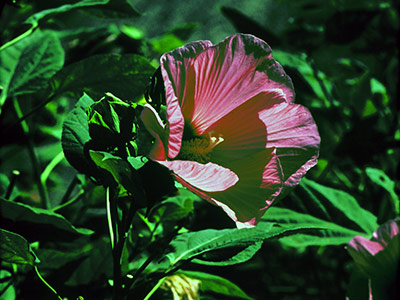Plant Systematics : Dicots
The dicots are characterized by two cotyledons, or seed leaves, in the embryo. The two seed leaves serve to protect the apical meristem, which consists of rapidly dividing cells that will give rise to the adult plant.

Swallowtail butterflies feed on the nectar of Butterfly Weed, (Asclepias).
Dicots in our area are varied and ubiquitous. Many of our most beautiful wildflowers are dicots. In the spring before the trees leaf out, look for dicots blooming in wooded areas. Virginia Bluebells have dangling sky-blue to lavender flowers and grow in moist woods. Occasionally, a rare white-flowered form will turn up. Some of the most common woodland flowers include Bloodroot and Spring Beauties. Bloodroot (Sanguaria canadensis) is aptly named for the dark orange juice in its roots.
As summer arrives, uncut fields will often be filled with common Oxeye Daisies, yellow Black-eyed Susan, and Queen Anne's Lace. Monarch butterfly caterpillars can often be found feeding on Queen Anne's Lace, a relative of parsley. The huge, dramatic flowers of Swamp Rose Mallow are hard to miss, often visible from roadsides growing in wet ditches.

Swamp Rose Mallow (Hibiscus palustris).
Just as autumn begins to set in, Butterfly Weed will open its fiery orange flowers. A single plant of Butterfly Weed might attract dozens of butterflies. Red Cardinal Flower is an often cultivated native plant that inhabits moist areas. Once the days grow shorter, tall Joe Pye Weed puts on its display, reaching heights of eight feet.





